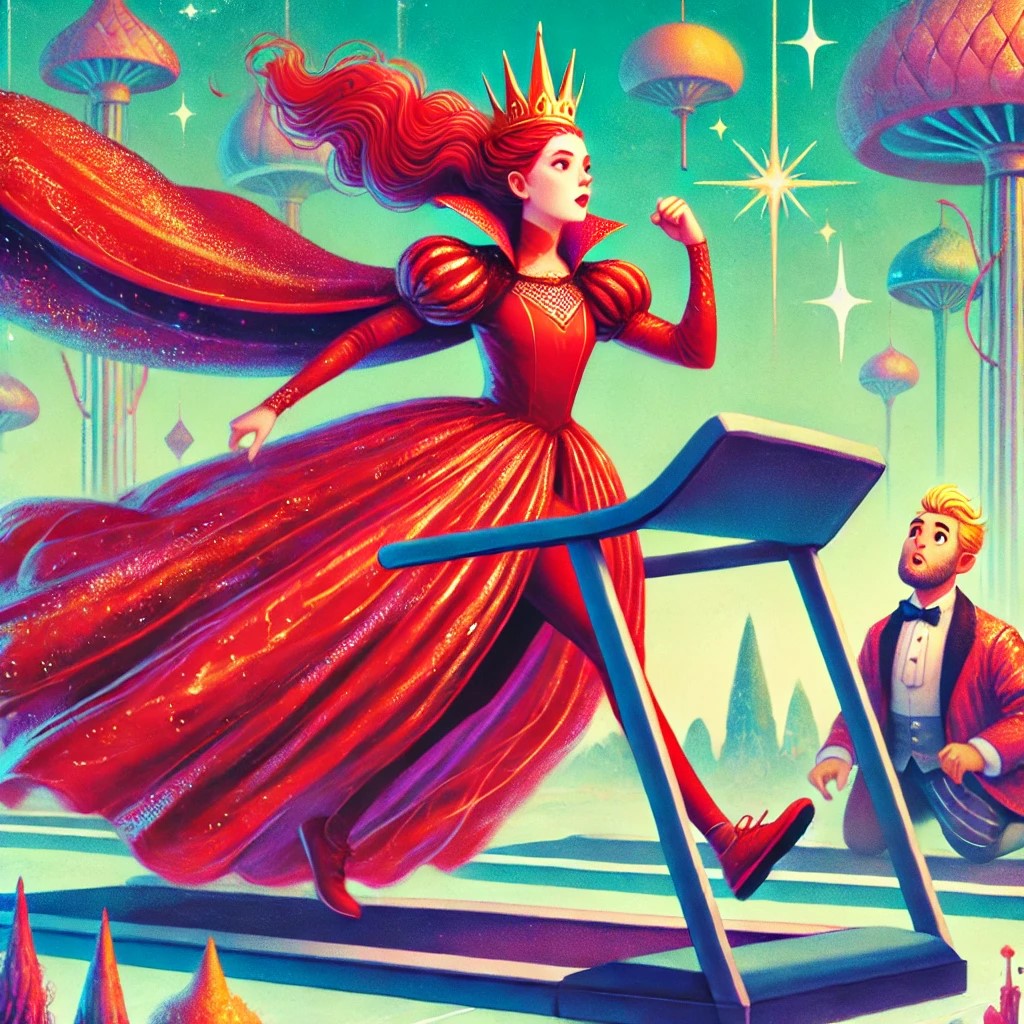
In evolutionary biology, the Red Queen Hypothesis describes a dynamic where species must continuously adapt and evolve, not merely to gain advantage but to survive amidst ever-changing environmental conditions and competitors. Coined from Lewis Carroll’s Through the Looking-Glass, the Red Queen’s words, “It takes all the running you can do to stay in the same place,” perfectly encapsulate this perpetual race. Strikingly, this concept mirrors the complexities of maintaining a healthy and thriving marriage. Just as species evolve to maintain equilibrium in nature, couples must also grow, adapt, and nurture their relationships to sustain connection and harmony. Let’s explore how the Red Queen Hypothesis offers profound lessons for modern relationships.
The Nature of Change
The Red Queen Hypothesis emphasizes that stagnation leads to vulnerability. In the natural world, failure to adapt can render a species obsolete, outpaced by evolving competitors or environmental shifts. Similarly, marriages are subject to internal and external pressures—from personal growth and changing priorities to societal expectations and unforeseen challenges. Without intentional effort, these forces can erode intimacy and understanding over time.
A healthy marriage thrives when both partners commit to evolving together. This means recognizing and embracing the inevitable changes that come with time. Career shifts, parenting challenges, health concerns, and aging are just a few examples of how life transforms. Couples who accept change as an opportunity for growth rather than a threat are better equipped to navigate life’s complexities.
Communication: The Adaptive Tool
In biology, organisms adapt through mechanisms like mutation and gene flow. In relationships, the equivalent mechanism is communication. Clear, empathetic, and honest communication acts as the primary tool for adaptation. When couples engage in meaningful dialogue, they gain insights into each other’s needs, fears, and desires, enabling them to respond effectively to shifting dynamics.
Communication isn’t just about addressing conflicts; it’s also about celebrating successes, expressing gratitude, and sharing dreams. Regular check-ins, whether through date nights or quiet conversations, allow couples to recalibrate their emotional connection. Much like species that refine their strategies to outmaneuver predators, couples who prioritize open dialogue can preempt misunderstandings and fortify their bond.
Effort and Intention: Running Together
The Red Queen Hypothesis underscores that survival demands continuous effort. Similarly, a thriving marriage requires consistent work. Love, while powerful, is not self-sustaining. It needs regular investment to flourish.
Intentional efforts can include:
- Learning Together: Pursuing shared hobbies or interests fosters connection and creates a sense of partnership.
- Practicing Gratitude: Acknowledging and appreciating each other’s contributions strengthens emotional intimacy.
- Setting Goals: Whether it’s planning a vacation or envisioning future milestones, goal-setting aligns couples toward a shared purpose.
By running the race together, partners build resilience and solidarity. They become co-creators of a relationship that evolves to meet life’s demands.
Navigating Conflict: The Role of Resilience
In ecosystems, competition drives innovation and resilience. Similarly, disagreements and conflicts in marriage, when approached constructively, can lead to deeper understanding and growth. The key lies in how couples handle these challenges.
- Active Listening: Ensuring each partner feels heard can de-escalate tension and foster mutual respect. The FANOS method of conversation fosters connection through intentional communication. It includes sharing Feelings to build emotional openness, offering Affirmations to uplift and show gratitude, expressing Needs to ensure they are understood and met, taking Ownership of mistakes to improve together, and celebrating Success to stay positive. This daily practice strengthens relationships by encouraging vulnerability, mutual support, and a focus on growth and positivity, creating a deeper bond between partners.
- Problem-Solving: Approaching conflicts as a team rather than adversaries encourages collaboration.
- Repair Attempts: Simple gestures like apologies or humor during arguments signal a willingness to restore harmony.
Resilience in marriage isn’t about avoiding conflict but about learning to navigate it with grace and empathy. Just as species evolve traits to withstand adversity, couples can develop strategies to weather relational storms.
Avoiding Complacency: The Danger of Stagnation
One of the central warnings of the Red Queen Hypothesis is the peril of complacency. In relationships, complacency often manifests as taking a partner for granted or neglecting emotional connection. Over time, this can lead to feelings of disconnection or resentment.
To counteract complacency:
- Celebrate Milestones: Recognizing anniversaries, birthdays, or personal achievements keeps the relationship vibrant.
- Surprise and Delight: Small gestures—a heartfelt note, an unexpected gift, or a spontaneous outing—can rekindle excitement.
- Stay Curious: Continuously learning about your partner’s evolving preferences and dreams fosters intimacy.
By staying proactive, couples can avoid the pitfalls of stagnation and maintain a dynamic, fulfilling relationship.
External Pressures: Adapting to the Environment
In evolutionary terms, external pressures like predators or climate changes necessitate adaptation. Similarly, marriages are influenced by external factors such as financial stress, social expectations, or family dynamics. Navigating these pressures requires unity and adaptability.
For example, during times of financial hardship, couples can strengthen their bond by working collaboratively to create a budget or identify solutions. When facing societal pressures, such as cultural norms or career demands, aligning on shared values provides a compass for decision-making. By treating external challenges as opportunities to strengthen their partnership, couples can transform adversity into growth.
The Power of Community
In nature, some species thrive not in isolation but through symbiotic relationships. Likewise, couples benefit from a supportive community. Friends, family, mentors, or faith-based groups can provide encouragement, perspective, and guidance.
Engaging with others also normalizes the ups and downs of marriage. Sharing experiences and learning from others fosters a sense of belonging and reduces feelings of isolation. Just as ecosystems flourish through interconnectedness, marriages can thrive within a network of supportive relationships.
Conclusion: Thriving in the Race
The Red Queen Hypothesis reminds us that life is a continuous race, demanding effort and adaptation to maintain equilibrium. In the context of marriage, this translates to an ongoing commitment to growth, connection, and resilience.
By embracing change, prioritizing communication, investing intentional effort, and navigating conflicts constructively, couples can create a relationship that not only endures but thrives. Much like the species that succeed in the evolutionary race, partners who evolve together discover deeper intimacy, joy, and fulfillment.
In marriage, as in nature, standing still is not an option. The secret to a lasting, loving partnership lies in running together, hand in hand, with hearts and minds open to the journey ahead.
At Robertson + Easterling, we’re here to help you navigate your family law journey with expertise, compassion, and care. Whether you need strategic guidance, fierce advocacy, or simply a listening ear, your story matters to us. Contact us today to discover how we can help you find clarity, confidence, and peace as you move forward. Click here to become a client.





